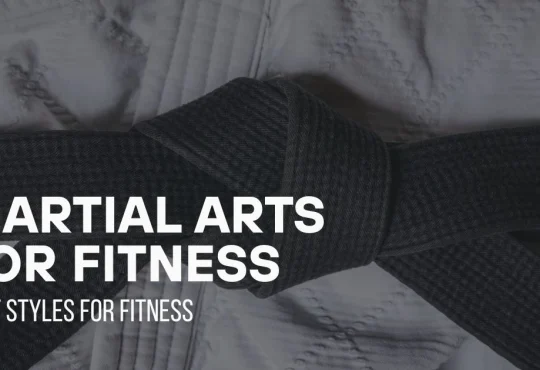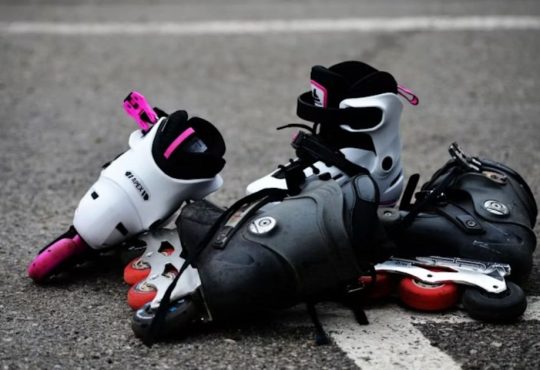Tactical sports are rapidly gaining popularity as they offer thrilling and immersive experiences that engage both the mind and body. Among the most popular of these sports are airsoft and paintball, each offering its own unique brand of excitement, strategy, and physical challenge. While both activities share common elements, such as team-based gameplay and combat simulations, they differ significantly in terms of gameplay style, equipment, and community. In this article, we’ll dive deep into what makes airsoft and paintball stand out, breaking down their appeal to tactical enthusiasts.’
Realism and Tactical Gameplay in Airsoft
One of the key factors that sets airsoft apart is its focus on realism. Airsoft players are drawn to the sport for its authentic military-style gameplay, where the use of realistic equipment and tactics is essential. The guns, often referred to as airsoft replicas or “airsoft guns,” are designed to look and feel like real firearms. Unlike paintball markers, which have a distinct and recognizable appearance, airsoft replicas are nearly indistinguishable from real weapons, making airsoft particularly appealing to military enthusiasts and those who appreciate realistic combat simulation.
Replicas and Gear
Airsoft guns are powered by gas, electricity, or springs, and they fire small plastic pellets, commonly called BBs. These guns are modeled after actual firearms, ranging from pistols to rifles to machine guns, giving players the opportunity to handle equipment similar to what is used in real-world military and law enforcement operations. This realism extends to the gear used in airsoft. Players typically wear military-style uniforms, tactical vests, and helmets, further enhancing the immersive experience. Unlike paintball, where the focus is on high-energy action, airsoft prioritizes strategy, precision, and tactical coordination.
Tactical Scenarios and Strategy
Airsoft games often incorporate complex tactical scenarios that mimic real-life military operations. Players engage in missions such as hostage rescues, search-and-destroy objectives, and large-scale warfare, which require them to employ real-world tactics, including flanking, suppressing fire, and stealth maneuvers. These tactical elements make airsoft a cerebral and strategic experience, where team coordination, communication, and planning are crucial to success.
The slower, more methodical pace of airsoft is another factor that sets it apart. While there are high-energy moments, airsoft often involves patience, strategic positioning, and calculated moves rather than the constant fast-paced action that is common in paintball. This aspect of airsoft makes it particularly appealing to players who enjoy working through complex tactical problems, thinking several steps ahead of their opponents, and focusing on precision rather than speed.
Role-playing and Immersion
Airsoft also stands out for its emphasis on role-playing and immersion. Many airsoft events take place in expansive fields, forests, or even abandoned buildings, where players can engage in large-scale military simulations. These events often last for several hours or even days, with players assigned specific roles, such as medics, snipers, or squad leaders, to reflect real-world military hierarchies. The result is an immersive, all-encompassing experience that allows players to step into the shoes of soldiers and experience the intensity and challenge of simulated warfare.
Overall, airsoft’s focus on realism, tactical gameplay, and immersive experiences is what makes it stand out in the world of tactical sports. For players who are seeking a more authentic, military-inspired combat experience, airsoft offers a level of depth and engagement that few other activities can match.
Fast-Paced Action in Paintball
If airsoft is about realism and strategy, then paintball is all about speed, adrenaline, and action. While both sports are rooted in team-based combat, paintball distinguishes itself with its fast-paced, high-energy gameplay. The dynamic nature of paintball, combined with its visually striking hit confirmation, makes it a thrilling experience for those who thrive in high-pressure, quick-reflex environments.
Markers and Projectiles
In paintball, players use paintball markers (commonly referred to as paintball guns) to shoot large, paint-filled pellets at their opponents. When these pellets make contact with a player, they burst open, leaving a visible mark that indicates a hit. This instant visual confirmation of hits adds an extra layer of excitement to the game, as players must react quickly to avoid being marked and eliminated. Unlike airsoft’s small BBs, paintball projectiles are larger and travel at lower velocities, which makes the game more about speed, agility, and movement than precision and accuracy.
High-Energy Gameplay
The speed and intensity of paintball are what make it a standout choice for thrill-seekers. Paintball matches are often short and fast-paced, with players constantly moving, ducking behind obstacles, and making split-second decisions. The action rarely lets up, and the need for quick reflexes and rapid fire means that players are always on the move. This is in contrast to airsoft, where tactics and positioning play a more significant role, and players may spend more time planning their moves and waiting for the right moment to strike.
Paintball also encourages aggressive playstyles. With fewer concerns about long-range accuracy, players can focus on advancing quickly, taking cover, and overwhelming their opponents with rapid-fire shots. The use of bunkers, inflatable barriers, and other obstacles further adds to the frenetic pace of the game, as players use these structures to their advantage, constantly repositioning to gain the upper hand.
Game Types and Formats
Paintball games come in a variety of formats, from the classic “capture the flag” to elimination matches and even large-scale scenario events. These different game types allow for a range of experiences, from quick five-minute skirmishes to more drawn-out, tactical encounters. However, even in longer games, paintball maintains its fast and chaotic nature, with players constantly in motion and under pressure to act quickly.
The accessibility of paintball is another factor that contributes to its popularity. Many people are drawn to the sport for its simplicity and instant gratification. Unlike airsoft, where strategy and realism are key, paintball offers immediate excitement with easy-to-understand rules and objectives. This makes it a popular choice for beginners, casual players, and those looking for a fun day out with friends.
Competitive Scenes and Community
Both airsoft and paintball boast strong, dedicated communities and competitive scenes. While each sport has its unique appeal, the passion and camaraderie found among players are central to their success.
Airsoft Competitions
In airsoft, competitions tend to focus on strategy, realism, and teamwork. Many airsoft tournaments and events are designed to simulate real-world military operations, with teams competing to complete objectives and missions. These competitions often take place on large, sprawling fields or in urban environments, where players must work together to outsmart and outmaneuver their opponents. The emphasis on communication and coordination is key, as airsoft teams rely heavily on tactics to achieve victory.
Airsoft competitions also vary in scale. Some events may be small, local matches involving a handful of teams, while others are large-scale operations involving hundreds of players over several days. These “MilSim” (military simulation) events are a hallmark of the airsoft community and are known for their immersive, role-playing elements. Players are often assigned specific roles within their team, such as sniper, medic, or support gunner, and must work together to complete complex objectives.
Paintball Tournaments
Paintball’s competitive scene is more fast-paced and adrenaline-fueled. Professional paintball tournaments, such as the National Xball League (NXL), feature teams of highly skilled players competing in high-intensity matches. These tournaments are known for their speed, aggression, and emphasis on teamwork, with teams often competing in rapid-fire elimination games or objective-based matches.
Unlike airsoft, where realism and strategy are paramount, paintball tournaments focus on speed, agility, and precision. Teams must work together quickly and effectively, coordinating their movements and timing their shots to outmaneuver their opponents. The visual spectacle of paintball, with its colorful hits and dynamic action, makes it a popular spectator sport, drawing crowds to watch professional teams compete.
Camaraderie and Culture
Both airsoft and paintball foster strong community bonds among players. Whether competing in local games or attending large-scale events, players often form close-knit teams and friendships that extend beyond the battlefield. The social aspect of both sports is a major draw, as players share a passion for tactical gameplay and teamwork.
In both communities, there is a deep sense of camaraderie and respect. While the competitive spirit is strong, players are united by their love of the game and their shared experiences. This sense of community is one of the reasons why airsoft and paintball have continued to thrive as popular recreational activities.
Differences in Equipment
The equipment used in airsoft and paintball is another major factor that differentiates the two sports. From the guns to the protective gear, each sport requires different types of equipment that impact the overall gameplay experience.
Airsoft Gear
In airsoft, the primary piece of equipment is the airsoft replica, which closely resembles a real firearm. These replicas are available in a wide range of styles, from handguns to assault rifles to sniper rifles. Many airsoft players invest in high-quality replicas that are designed for accuracy and reliability. In addition to the guns, airsoft players often wear military-style clothing and tactical gear, such as vests, helmets, and knee pads, to protect themselves and enhance the realism of the game.
One of the advantages of airsoft is the affordability of the equipment. While high-end airsoft replicas can be expensive, there are many budget-friendly options available, making it accessible to players of all skill levels. Airsoft guns also require less maintenance compared to paintball markers, and the cost of ammunition (plastic BBs) is significantly lower.
Paintball Gear
In contrast, paintball markers are designed specifically for shooting paint-filled pellets. These markers vary in size and design, with some resembling traditional guns and others featuring more unique, sport-specific designs. Paintball markers require regular maintenance to keep them in good working condition, and the cost of paintballs can add up quickly, especially in competitive settings.
Due to the larger size and impact of paintball pellets, players are required to wear more protective gear than in airsoft. This includes full-face masks, padded clothing, gloves, and chest protectors. The protective gear is necessary to prevent injury, as paintball pellets can cause bruises and welts upon impact.
The more substantial protective gear and frequent reloading of markers also contribute to the fast-paced, aggressive nature of paintball, as players are encouraged to move quickly and take cover to avoid being hit.
Which Sport is Right for You?
Choosing between airsoft and paintball ultimately comes down to personal preference and the type of experience you’re seeking. Both sports offer unique challenges and thrills, but they cater to different types of players.
If you’re someone who enjoys strategy, realism, and tactical gameplay, airsoft is likely the better choice. The military-style simulations, emphasis on precision and teamwork, and realistic gear make airsoft an immersive experience that appeals to those who want to test their strategic thinking and coordination.
On the other hand, if you’re looking for fast-paced, adrenaline-fueled action, paintball may be more your style. The quick reflexes, aggressive playstyles, and visually striking hit confirmation make paintball an exciting, high-energy sport that’s perfect for thrill-seekers.
In conclusion, both airsoft and paintball stand out as top choices in the world of tactical sports, offering different but equally engaging experiences. Whether you prefer the realism of airsoft or the fast-paced action of paintball, both sports provide an opportunity to test your skills, build teamwork, and enjoy the excitement of tactical gameplay.




